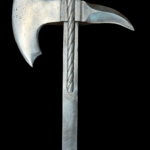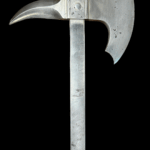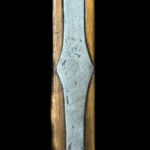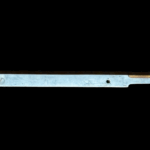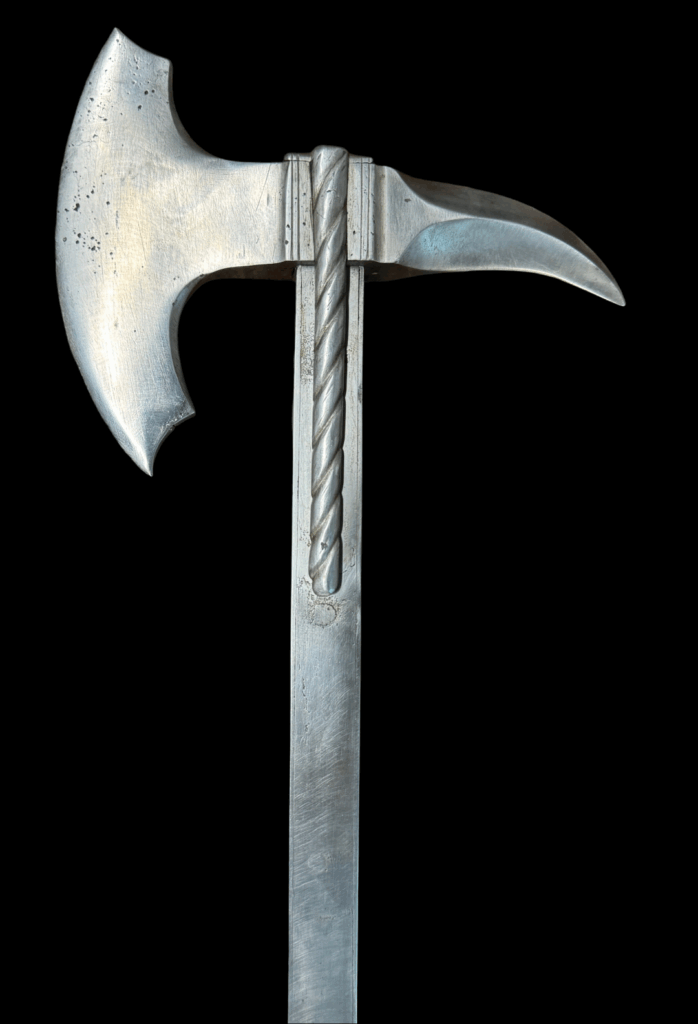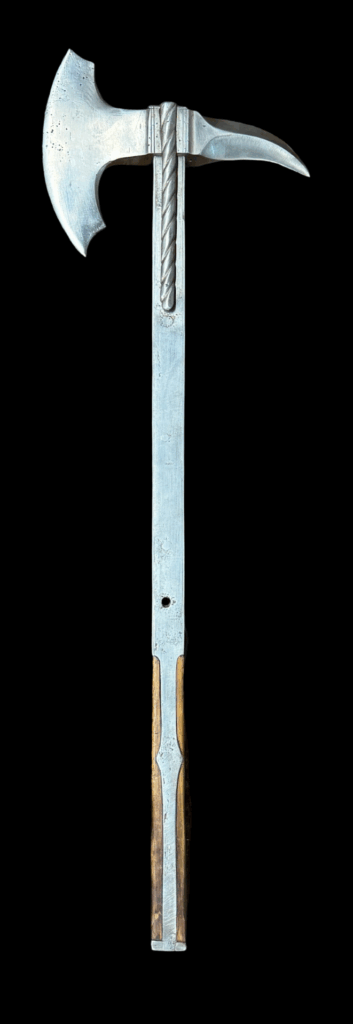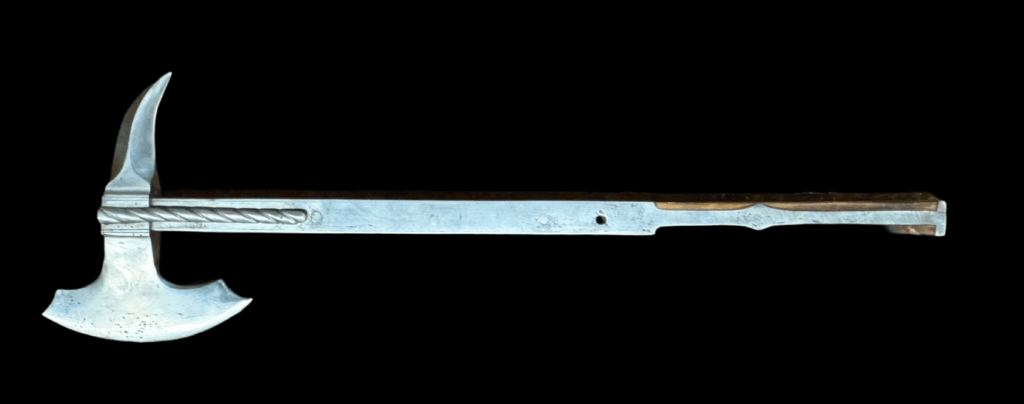1796) RARE TRANSITIONAL GERMAN WAR AXE CIRCA 1540: Mint museum condition, absolutely superb construction and design. They do not get any better than this example. Designed for cutting with the blade, stabbing with the upper tip, trapping the opponent’s weapon , or dismounting a Knight with the lower tip, and smashing with the opposite side hammer head.
Introduction: Not all hammer hafts were made from all wood or all steel. The axe under discussion is a rare transitional variant that is made from both. It’s the next Western European axe transition from a wooden haft before the all-steel axes. Notice the fluke (spike) is still stout like on Gothic war axes (circa 1500), which were used more for smashing armor than the later hammers, which have a longer fluke, which also facilitates dismounting a knight from his horse. The length of a hammer’s fluke is a reasonably good indicator to estimate a Western European hammer’s age.
Discussion: The axe is an old weapon. When you mention the axe in warfare, the first thing that comes to mind are the Vikings and their Dane axes. The cavalry used war axes in Central and Western Europe as late as the mid-1600s. The axe was a highly effective weapon because the Knight’s strike was augmented by the movement/running of his horse. This increased the effectiveness of the axe in war. The axe in Medieval and Renaissance Europe became increasingly important as plate armor developed. Swords often ricocheted off plate armor, but an axe could damage a well-armored knight or soldier. Even if the axe did not penetrate the Knight’s armor, the impact would send shock waves disorienting even the best combatant.
Axes are rare in today’s collectors’ market because so few have survived:
1) First, there were not that many axes to begin with. Knights had a choice of a mace, hammer, or axe. It’s not like a sword that every Knight had to have one.
2) Most axes had a wooden haft, which is biodegradable. The haft would rot, break, or the axe head would loosen, causing the axe head to drop off.
3) Many axes were repurposed as farming or tool axes, which they were not designed for, and quickly broke.
4) Steel was still a valuable commodity; an axe head could have been sold to the village blacksmith and melted down to reuse the steel.
Description: Constructed with four straps creating a square socket at the top; one-piece forged crescent-shaped blade with wide triangular-shaped fluke, axe, and haft, secured by a transverse pyramidal bolt, metal casing secured to wooden dowel by bolts, opening for a tong before the wooden and metal grip, with a flat butt cap. Some light pitting on the blade.
Condition: Superb, museum quality.
Length: Approximately 23.3 inches.
Provenance: From a major Italian collection.
Conclusion: War axes are quite rare. Few have survived, especially in this condition. Axes have a certain machismo that strongly appeals to collectors. Even though this is a world-class example that would make a great addition to any museum or major collection, it is priced to sell today. ACT NOW and avoid disappointment. I probably will never have another war axe of this magnitude again!!!*

